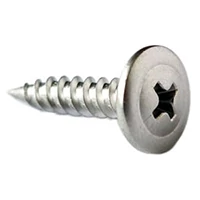fender vs flat washer
Understanding the Differences Fender Washers vs. Flat Washers
When it comes to mechanical fastening and assembly, the choice of the right type of washer can significantly influence the performance and longevity of a project. Two common types of washers are fender washers and flat washers. While they may seem similar at first glance, understanding their unique characteristics and applications is crucial for any DIY enthusiast or professional engineer.
Fender Washers Unique Design and Purpose
Fender washers are distinguished by their larger outer diameter compared to standard flat washers. This design feature allows them to distribute the load over a wider area, which prevents the washer from pulling through softer materials, such as sheet metal or plastic. The increased surface area makes fender washers particularly effective in applications where a bolt or screw needs to be secured against thin or fragile materials.
One common use of fender washers is in the automotive industry. They are often employed in attaching fenders to the body of a vehicle, hence the name. However, their versatility extends beyond automotive applications; they are also favored in construction and general manufacturing, where they can help secure components in situations where surface area is critical.
Fender washers typically come in a variety of sizes and materials, including stainless steel, zinc-plated steel, and plastic, which makes them suitable for different environmental conditions. The choice of material often depends on the specific application and the need for corrosion resistance.
fender vs flat washer

Flat Washers Simplicity and Functionality
Flat washers, on the other hand, have a uniform thickness and a central hole that is typically the same size as the bolt or screw being used. They are designed to provide a smooth bearing surface, prevent damage to the surface of the materials being fastened, and help distribute the load of the fastener evenly. Their simplicity makes them ideal for a wide range of applications, from basic home repairs to industrial assembly lines.
Flat washers are often used in conjunction with other fastening hardware like nuts and bolts. They are frequently made from materials like stainless steel and nylon to suit different physical demands and conditions. Flat washers are particularly effective in applications where the fastener needs to be tightened without the risk of damaging the material underneath.
Which One to Choose?
The decision between using a fender washer or a flat washer ultimately depends on the requirements of your specific application. If you are working with softer materials and need to prevent the fastener from pulling through, a fender washer is likely the best choice due to its larger surface area. Conversely, if you need a simple solution to distribute the load of a fastener and do not have concerns about the material being too soft, standard flat washers will often suffice.
In conclusion, both fender washers and flat washers have important roles in fastening applications. Understanding the nuances between these two types of washers will help in making informed decisions that ensure durability, reliability, and effectiveness in your projects. Whether you are building a car, assembling furniture, or engaging in construction, selecting the appropriate washer is key to achieving a secure and long-lasting connection.
-
Top Choices for Plasterboard FixingNewsDec.26,2024
-
The Versatility of Specialty WashersNewsDec.26,2024
-
Secure Your ProjectsNewsDec.26,2024
-
Essential Screws for Chipboard Flooring ProjectsNewsDec.26,2024
-
Choosing the Right Drywall ScrewsNewsDec.26,2024
-
Black Phosphate Screws for Superior PerformanceNewsDec.26,2024
-
The Versatile Choice of Nylon Flat Washers for Your NeedsNewsDec.18,2024










